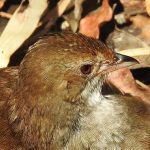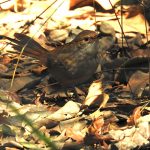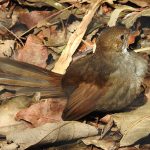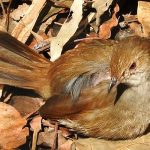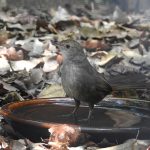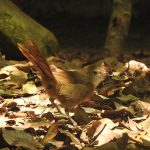EASTERN BRISTLEBIRD
The Eastern Bristlebird is a small and cryptic bird species native to eastern Australia. It is known for its distinctive appearance and elusive behavior
The Eastern Bristlebird is a brownish bird with distinctive bristle-like feathers around its base of the bill, which give it its name. It has a streaked brown plumage, a short tail, and a rounded body. Its underparts are pale with darker streaks.
This bird species is primarily found in dense, shrubby heathlands and coastal thickets along the eastern coast of Australia, from southern Queensland to eastern Victoria. It prefers areas with dense vegetation and thick undergrowth.
Eastern Bristlebirds are known for being secretive and difficult to spot. They are more often heard than seen due to their habit of skulking in dense vegetation. Their call is a distinctive and loud “chip-chip-chip” sound.
These birds are insectivorous, feeding primarily on insects and other invertebrates found in the leaf litter and undergrowth of their habitat. They forage on the forest floor, using their bills to probe for food.
The Eastern Bristlebird is listed as an endangered species due to habitat loss and fragmentation caused by urbanization, agriculture, and wildfires. Conservation efforts must been initiated to protect and restore their habitats, including controlled burning practices and habitat restoration programs.
Breeding usually occurs from late winter to early summer. The nest is a well-hidden cup-shaped structure made of twigs, leaves, and grass, placed low to the ground in dense vegetation. The female typically lays a small clutch of eggs.
The main threats to the Eastern Bristlebird include habitat destruction, invasive species, and the increased risk of wildfires due to climate change. These factors have significantly reduced their population and distribution.
Conservation efforts are essential to ensure the survival of the Eastern Bristlebird. This includes protecting their habitat, managing invasive species, and conducting research to better understand their behavior and ecology. These actions are crucial in helping this unique and elusive bird species thrive in its natural habitat.

